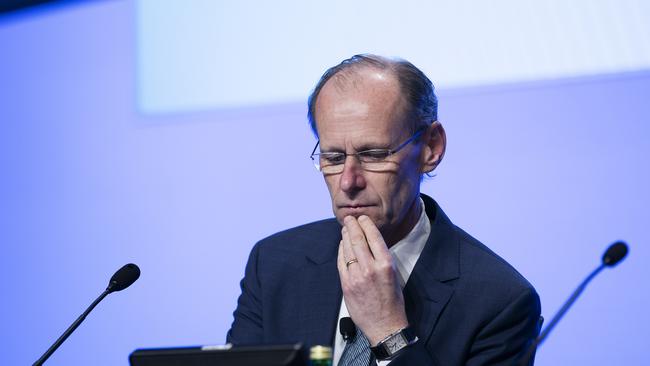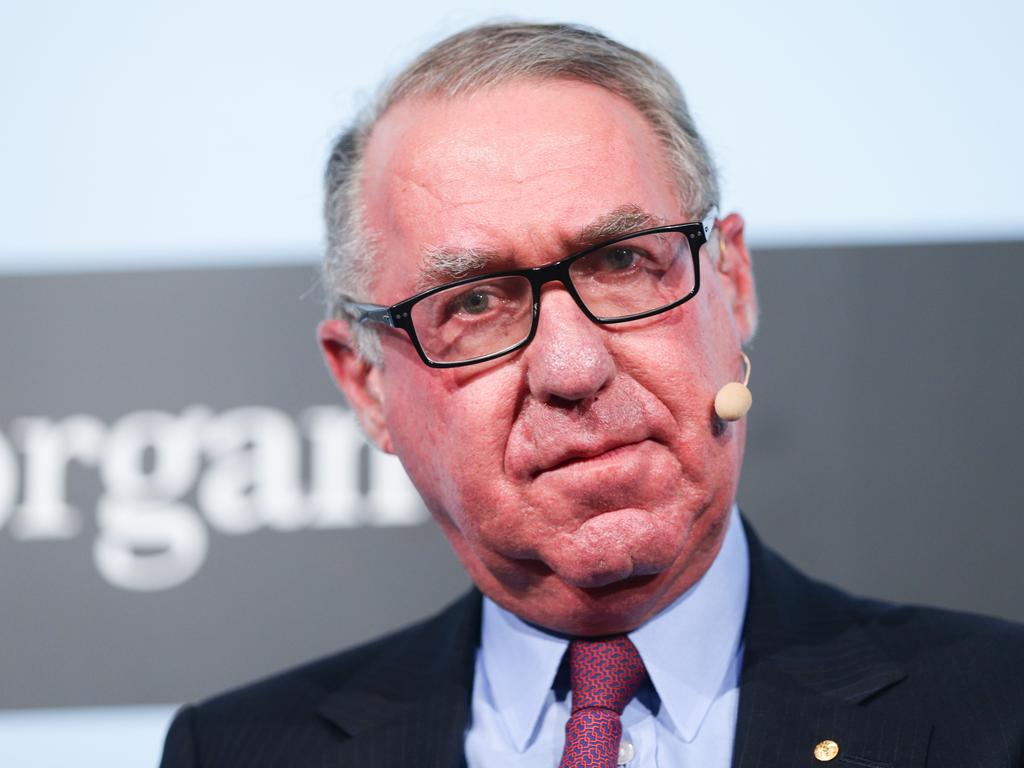NAB leaves ANZ in spotlight on writedowns
ANZ is firmly in the spotlight as large potential loan losses loom in the banking sector.

ANZ is firmly in the spotlight as large potential loan losses loom in the sector, after National Australia Bank disclosed a $1.14bn hit to interim profit and warned of COVID-19-related impacts to come.
NAB on Monday joined rival Westpac in outlining a host of charges ahead of its results for the six months ended March 31, not including expectations for bad and doubtful debts as the pandemic grips the economy.
Investors are now closely monitoring ANZ for any key announcements ahead of it kicking off reporting season late this month. Westpac has said it will disclose expected loan losses ahead of its profit results on May 4.
NAB said its interim cash profit would be hit by $1.14bn in charges for software and life insurance writedowns and higher customer compensation, as new chief executive Ross McEwan puts his stamp on the bank and seeks to get it on a firmer footing.
A change in NAB’s software capitalisation policy amounts to a hit of $742m after tax, while the impairment of the bank’s holding in MLC Life totals $214m and the net rise in provisions for customer remediation is $188m.
NAB’s shares declined 2.4 per cent to $16 on Monday, aligning with a drop in the S&P/ASX 200.
However, analysts and investors are most concerned about how the big banks will navigate an expected spike in bad loans, as unemployment surges and businesses are severely affected by shutdowns across the economy.
“The elephant in the room is credit losses and related to that is dividends,” Merlon Capital Partners principal Hamish Carlisle said. “It is unusual that none of the banks have provided any guidance around credit losses. It is either a remarkable coincidence or it is a directive from APRA (the Australian Prudential Regulation Authority).”
Mr Carlisle said in the upcoming round of results, bank dividend payments may “send a stronger message” to investors about their health, over other metrics.
APRA has called on banks to materially reduce dividend payments or consider their suspension while the crisis is affecting the economy. It wants banks to conserve capital during the pandemic to help keep credit flowing.
Morgans analyst Azib Khan has revised up his estimates for loan loss estimates at the big banks. “We are forecasting each major bank’s September 30, 2019 collective provision balance to increase by about 50 per cent in the first half of 2020,” he said. Morgans expects NAB to report dividends of 58c a share in its 2020 year, down from a prior estimate of 70c.
NAB’s update said it was increasing the minimum threshold for software to be capitalised from $2m to $5m, reflecting a new approach for managing projects to “uplift business accountability”.
The higher customer compensation costs — the bulk of which relate to the bank’s wealth division — are expected to reduce NAB’s common-equity tier-one capital ratio by about six basis points. The new remediation charges bring the bank’s tally to about $2.28bn, and it said as payments to customers continued the total cost of the program “remains uncertain”.
Westpac this month said its interim profit would be dented by provisions and writedowns of $1.43bn largely in anticipation of a record financial crimes penalty, but also due to more customer compensation payments. It said climbing loan losses were anticipated and estimates would be provided ahead of its May results.
NAB also cautioned of further pressure on profit as it models how loan losses will play out as the pandemic’s impact plays out.
The bank’s board must also make a crucial call on first-half dividends. NAB’s statement said further detail would be forthcoming at its May results. “This will include information about the impact of the COVID-19 pandemic on NAB’s earnings and balance sheet including provisions, combined with capital and dividend implications,” Monday’s ASX statement said.
Last year NAB reported an interim cash profit of $2.95bn, while for its first quarter the bank booked unaudited cash earnings of $1.65bn.
Monday’s statement saw the bank reduce the carrying value of its 20 per cent investment in MLC Life since September last year. The remainder of the business is owned by Japan’s Nippon Life.
NAB also said from the first half its wealth business would be reported as a separate segment called MLC Wealth, rather than sitting within its consumer banking division. The bank intends to spin off or sell MLC, but the deal has been plagued by delays.
Last week, Mr McEwan said employees would not be immune from job losses linked to reshaping the bank that were unrelated to COVID-19.
NAB releases its half-year results on May 7, after ANZ starts the major bank reporting season late this month. Commonwealth Bank reports on a June 30 year end, while its three main rivals have a September 30 balance date.








To join the conversation, please log in. Don't have an account? Register
Join the conversation, you are commenting as Logout